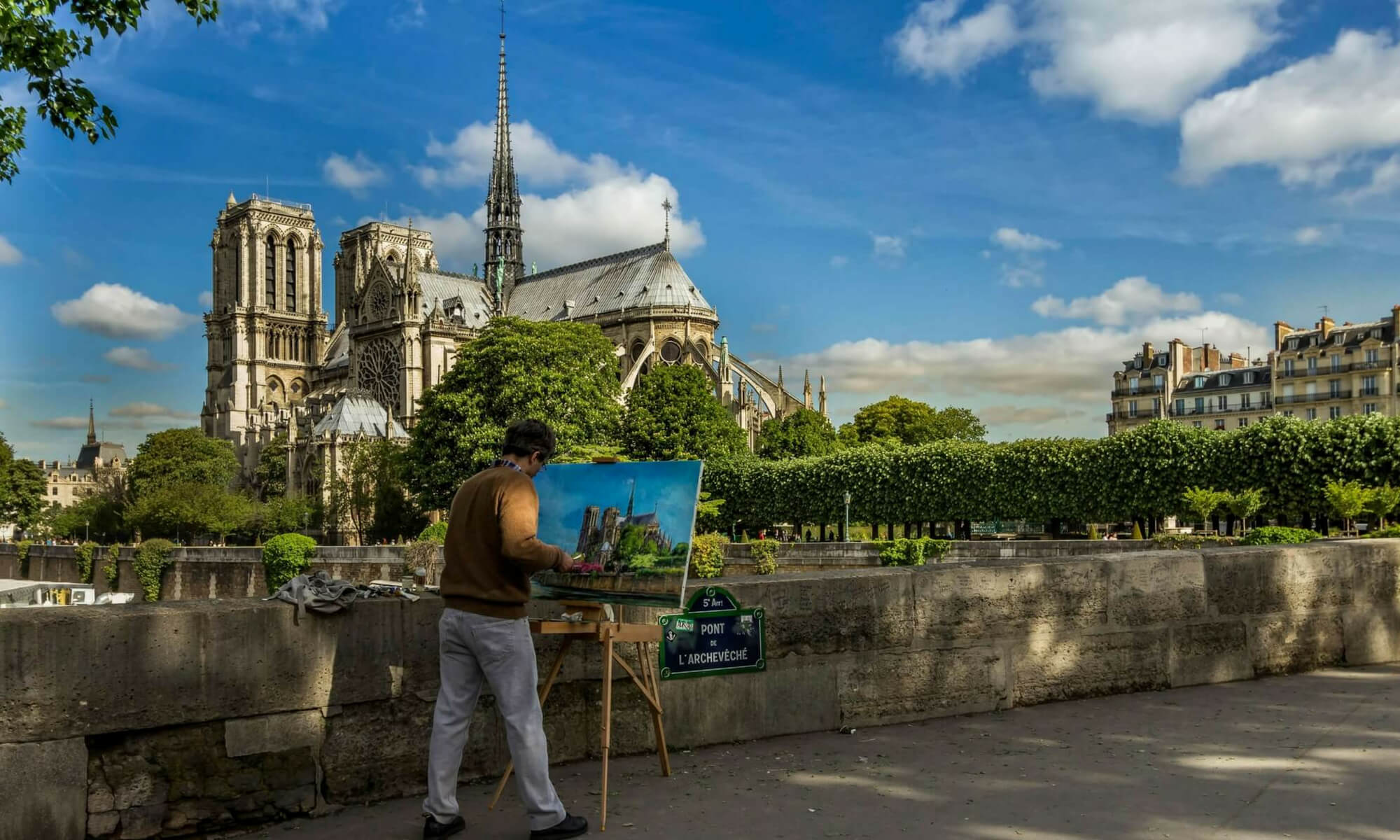Categories: French Culture, French History
This episode features our frequent and very popular guest Elyse Rivin. If you enjoy her episodes, please consider supporting her on Patreon.
Van Gogh’s Life Story in France: A Heartbreaking Journey of Genius and Struggle
Welcome to another deep dive into the lives of the people who shaped France—and the world. I’m Annie Sargent, your host at Join Us in France, and today we’re exploring one of the most moving episodes we’ve ever recorded. My friend, Elyse Rivin of Toulouse Guided Walks, joins me to unpack the tragic, brilliant, and utterly human story of Vincent van Gogh. If you’ve ever wondered about Van Gogh’s life story in France, this episode is for you. We’ll walk through his struggles, his masterpieces, and the heartbreaking end that made him a legend.
Listen to this episode ad-free
Why Van Gogh’s Life Story in France Matters
Van Gogh’s life story in France is one of contrasts: darkness and light, despair and creativity, rejection and posthumous fame. Elyse Rivin, with her deep knowledge of art history and her gift for storytelling, guides us through the pivotal moments of his life. From his early years in the Netherlands to his transformative time in France, we see how his experiences shaped his art—and how his art, in turn, shaped the world.
Elyse starts by setting the stage: Van Gogh wasn’t French. He was Dutch. But he spent his most productive—and turbulent—years in France. He arrived in Paris in 1875, hated it at first, but eventually found his footing among the city’s bohemian artists. Later, he moved to Arles, where he painted some of his most iconic works, including The Yellow House and Starry Night Over the Rhône. His dream of creating an artists’ colony there ended in disaster, but the paintings he created during this time are now worth millions.
The Struggles That Shaped His Art
Van Gogh’s life was marked by failure, rejection, and mental health struggles. Elyse explains how these challenges fueled his art. As a young man, he tried—and failed—at careers as an art dealer, a preacher, and even a Bible translator. His family, though supportive, didn’t know what to do with him. His father even considered sending him to a mental hospital.
But it was his brother, Theo, who became his lifeline. Theo provided financial and emotional support, allowing Vincent to focus on painting. Elyse describes how Theo’s belief in him was crucial—he bought Vincent’s paintings, even when no one else would. This support gave Vincent the freedom to experiment, leading to the bold, vibrant style we associate with him today.
His Time in Paris: A Turning Point
Paris was a turning point for Van Gogh. Elyse paints a vivid picture of his time there, living in Montmartre, meeting artists like Toulouse-Lautrec and Pissarro, and discovering new techniques. He hated the city at first, finding the French art scene too commercial. But over time, he began to embrace its energy. He started using brighter colors, inspired by the Impressionists and Japanese prints.
Elyse shares a fascinating detail: Van Gogh was fluent in French and devoured books by Balzac, Zola, and Hugo. His love for literature and his empathy for the poor shaped his artistic vision. He wanted his art to reflect the struggles of ordinary people, which is why his early works—like The Potato Eaters—are so dark and somber.
Arles and the Dream of an Artists’ Colony
Van Gogh’s time in Arles is one of the most dramatic chapters of his life. He rented the famous Yellow House, where he dreamed of creating a community of artists. He invited Paul Gauguin to join him, but their relationship quickly turned toxic. Elyse describes their fights, their drinking, and the infamous moment when Van Gogh cut off part of his ear.
Despite the chaos, this period was incredibly productive. Van Gogh painted furiously, creating masterpieces like Sunflowers, The Bedroom, and Starry Night Over the Rhône. Elyse’s description of these works is so vivid, you’ll feel like you’re standing in front of them. She explains how the light and colors of the south of France transformed his art, moving him away from the dark tones of his early work.
Saint-Rémy and the Final Years
After his breakdown in Arles, Van Gogh was committed to an asylum in Saint-Rémy-de-Provence. Elyse’s account of this time is heartbreaking. He was locked up, but he continued to paint. He created some of his most famous works here, including Wheat Fields and more versions of Starry Night. The swirling skies in these paintings reflect his inner turmoil, but they also show his genius.
Elyse points out that Van Gogh was never happy, even during his most productive periods. His letters reveal a man tormented by his emotions, yet driven to create. It’s a reminder that great art often comes from great pain.
Auvers-sur-Oise: The End of a Genius
The final chapter of Van Gogh’s life story in France takes place in Auvers-sur-Oise, where he moved to be closer to his brother Theo and under the care of Dr. Gachet. Elyse describes his last days with a mix of sadness and awe. He painted relentlessly, creating works like Wheatfield with Crows. Then, on July 27, 1890, he shot himself in the chest. He died two days later, with Theo at his side.
His last words—“The sadness will last forever”—are haunting. But Elyse reminds us that his legacy is anything but sad. Within a year of his death, his work was celebrated by artists like Monet. Today, his paintings sell for millions, and his influence is everywhere.
Why This Episode Resonates
This episode isn’t just about art—it’s about humanity. Van Gogh’s story is one of perseverance, creativity, and the cost of genius. Elyse’s storytelling makes it feel personal, like we’re right there with Van Gogh as he struggles and creates. Whether you’re an art lover, a history buff, or just someone who appreciates a good story, this episode will move you.
And if you’re dreaming of exploring France’s artistic heritage, don’t forget to check out Elyse’s Toulouse Guided Walks. She offers incredible tours that bring history to life. If you’re considering a longer stay, look into the freelance visa for France—it’s a great way to immerse yourself in the culture while working remotely.
Useful Links
- Van Gogh Museum, Amsterdam
- Musée d’Orsay, Paris
- Fondation Vincent van Gogh, Arles
Listen and Subscribe
Ready to dive into Van Gogh’s life story in France? Listen to the full episode on your favorite podcast app, Spotify, or YouTube. And if you love what you hear, subscribe to Join Us in France so you never miss an episode. We’d love to hear from you, too—comment below and tell us which of Van Gogh’s works resonates with you. Is it the swirling skies of Starry Night? The vibrant Sunflowers? Or the raw emotion of The Potato Eaters?
Let’s keep the conversation going. Because art—and France—are always better when shared.
Table of Contents for this Episode
More episodes about art in France
#VanGogh, #VincentVanGogh, #ArtHistory, #StarryNight, #Sunflowers, #PostImpressionism, #FrenchArt, #ArtLovers, #ArtistsLife, #TragicGenius, #JoinUsInFrance, #FrancePodcast, #TravelFrance, #FrenchCulture, #ExploreFrance, #DiscoverFrance, #FranceTravelTips, #RealFrance, #Francophile, #FranceAdventures
FOLLOW US ON:
Subscribe to the Podcast
Apple YouTube Spotify RSSSupport the Show
Tip Your Guides Extras Patreon Audio Tours
Read more about this episode
TranscriptCategories: French Culture, French History



